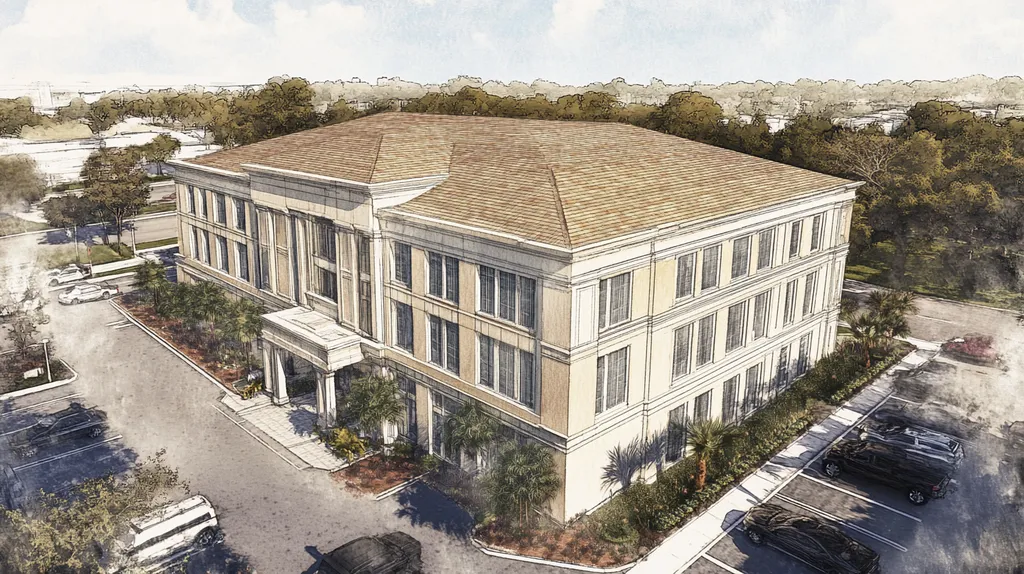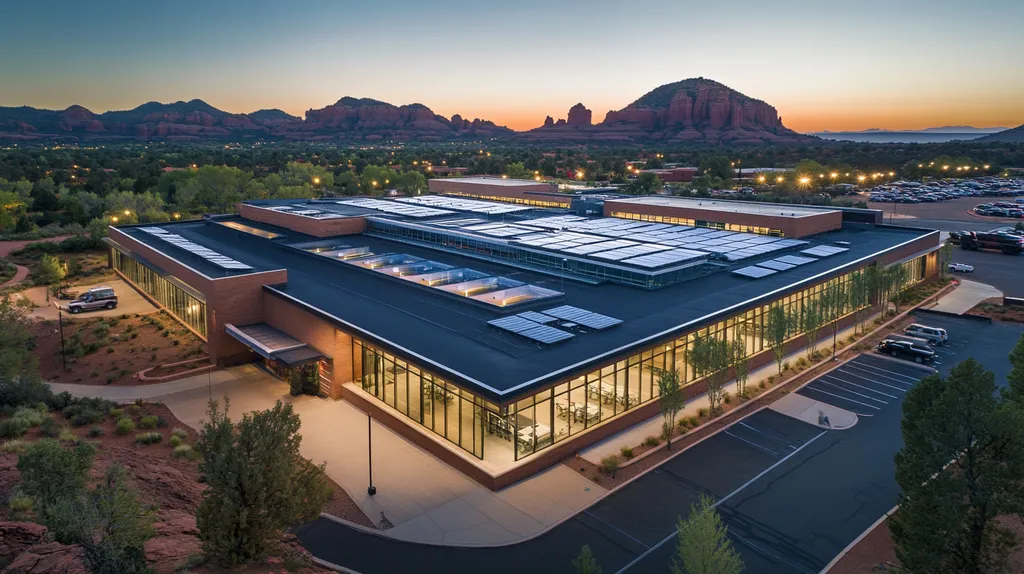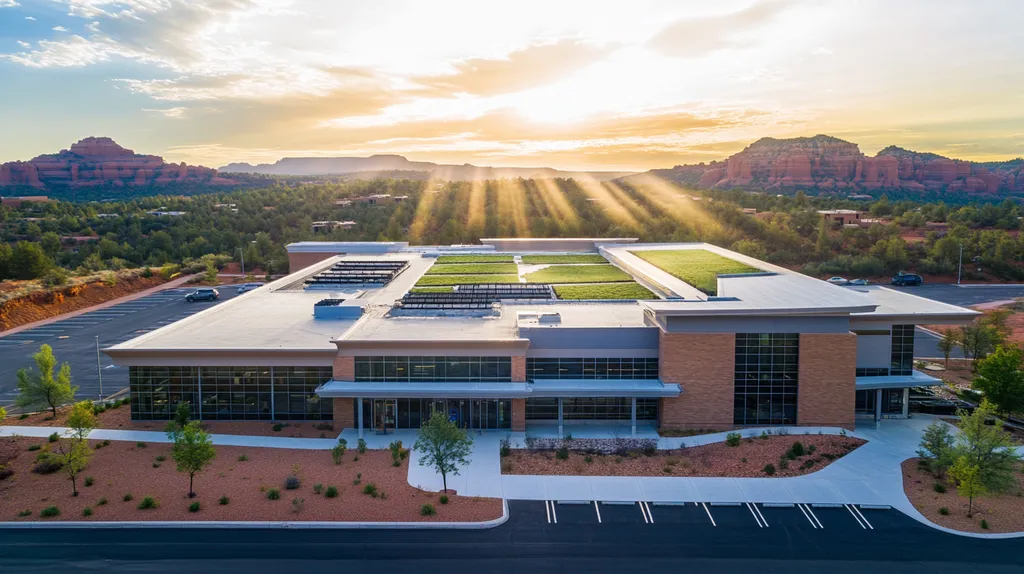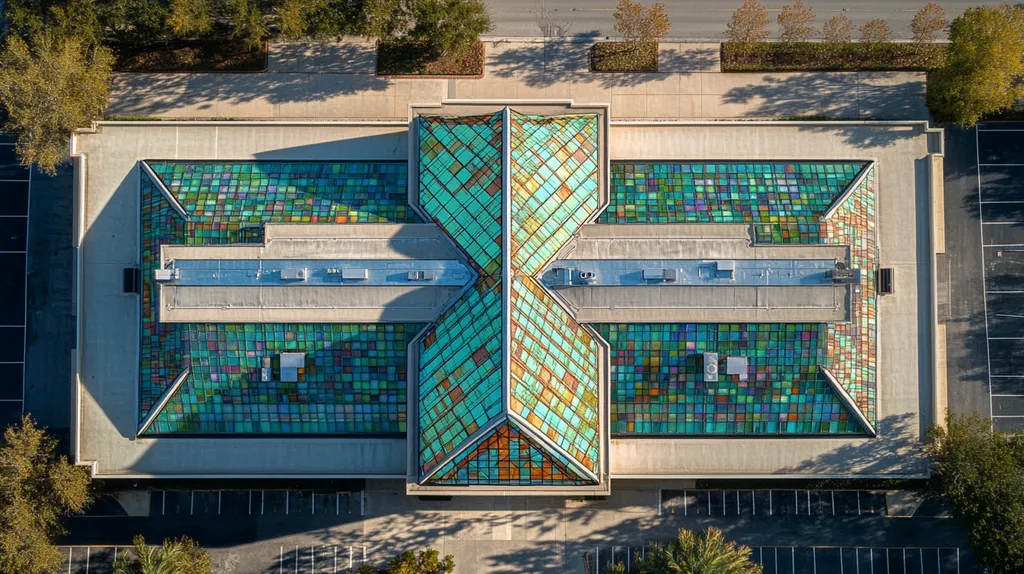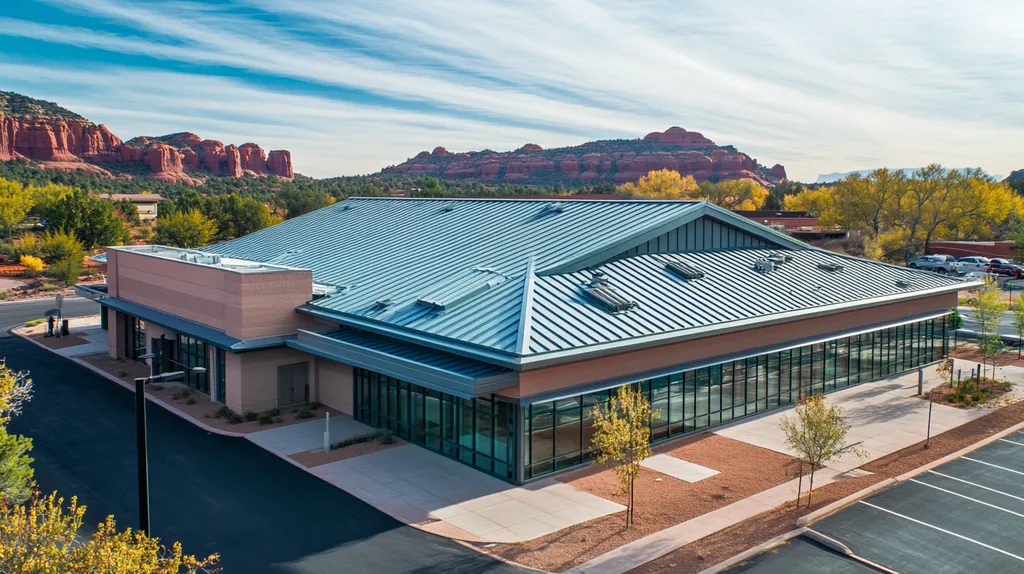Industrial roof coating failures cost facility owners over $400 million annually in premature replacements and emergency repairs, with 60% of these failures stemming from preventable factors affecting coating lifespan.
While modern coating technologies can extend roof life by 15-20 years, misunderstandings about material selection, installation requirements, and maintenance protocols continue to drive catastrophic failures.
This comprehensive analysis examines critical factors determining coating longevity, from environmental stressors to application techniques, providing facility managers with evidence-based strategies for maximizing their roofing investments.
SECTION 1: COMMON MISCONCEPTIONS
The industrial roofing sector faces critical challenges due to persistent misconceptions about coating lifespans. These misunderstandings lead to premature roof failures, unnecessary replacements, and millions in avoidable costs annually. While coating technology has advanced significantly, outdated beliefs about uniformity, weather resistance, and installation requirements continue to influence decision-making. Understanding these misconceptions is essential for making informed choices that maximize roof coating performance and return on investment.
Myth: All Roof Coatings Have Uniform Lifespans
Commercial roof coatings can extend a roof’s life by 10 to 20 years, but this duration varies significantly based on the specific coating type selected. While acrylic coatings typically last 10-15 years, silicone-based solutions often exceed 20 years with proper maintenance. (source: Signature Roofing and Coatings)
Material composition creates substantial differences in durability and performance characteristics. Polyurethane coatings offer superior impact resistance, while silicone excels in UV protection and water resistance.
Cost considerations must extend beyond initial purchase price to include expected lifespan and maintenance requirements. Lower-quality coatings often result in higher total ownership costs through increased maintenance and earlier replacement needs.
Regional climate conditions should guide coating selection, as certain formulations perform better in specific environments. Desert installations require different characteristics than coastal applications.
Misunderstanding the Impact of Weather on Coatings
Weather exposure represents the primary factor in coating degradation, yet many facility managers underestimate its impact. UV radiation, temperature fluctuations, and precipitation patterns all affect coating performance differently.
Thermal cycling causes expansion and contraction that can compromise coating adhesion. Areas experiencing extreme temperature variations require specially formulated products to maintain flexibility and prevent cracking.
Moisture accumulation presents particular challenges, as standing water can degrade even high-quality coatings. Proper drainage design and regular maintenance become essential in wet climates.
Geographic location determines the specific weather challenges a coating must withstand. Coastal facilities face salt spray corrosion, while northern locations must handle freeze-thaw cycles.
Installation Quality Does Not Affect Longevity
Surface preparation quality directly impacts coating adhesion and long-term performance. Inadequate cleaning, improper primers, or rushed application procedures can reduce coating lifespan by 50% or more.
Application thickness must meet manufacturer specifications precisely. Too thin reduces protection, while excess thickness can lead to curing problems and premature failure.
Environmental conditions during installation significantly affect coating performance. Temperature, humidity, and dew point must fall within acceptable ranges for proper curing.
Professional installation teams understand critical details like overlap requirements, reinforcement placement, and detail work around penetrations. These factors determine whether a coating achieves its full potential lifespan.
Regular inspection and maintenance protocols must be established immediately following installation. Early detection of potential issues prevents minor problems from escalating into system failures.
SECTION 2: PRACTICAL IMPLICATIONS
Industrial roof coating performance hinges on critical but often overlooked practical factors that determine long-term success. Research indicates that 85% of premature coating failures stem from inadequate preparation, poor maintenance protocols, or missed inspection schedules. These oversights cost facility owners millions annually in accelerated degradation and emergency repairs. Understanding and addressing these practical elements is essential for maximizing coating investments and preventing catastrophic failures.
Effects of Poor Surface Preparation on Coating Durability
Surface preparation represents the cornerstone of coating performance, yet it remains one of the most frequently compromised steps. Chemical residues, moisture content, and surface profile all critically impact coating adhesion and long-term durability.
Inadequate cleaning protocols result in immediate adhesion failures, while improper surface profiles prevent the mechanical bonding necessary for coating stability. These preparation deficiencies often manifest as blistering, peeling, or complete coating detachment within the first 24 months.
Temperature and humidity during preparation significantly influence outcomes. Applying coatings outside manufacturer-specified environmental conditions virtually guarantees premature failure, regardless of material quality.
Proper surface preparation requires specialized equipment, precise timing, and extensive knowledge of material compatibility. Cutting corners in this phase invariably leads to exponentially higher costs through repeated repairs and early replacement.
Role of Maintenance in Extending Roof Coating Life
Regular maintenance dramatically extends coating performance while reducing lifetime ownership costs. Systematic inspection protocols catch minor issues before they escalate into major failures requiring extensive repairs.
Professional cleaning removes damaging contaminants that accelerate coating breakdown. Acidic pollutants, biological growth, and accumulated debris all contribute to premature aging when left unaddressed.
Documentation of maintenance activities provides crucial data for tracking coating performance and predicting future maintenance needs. This information helps facility managers optimize maintenance schedules and budget effectively for necessary interventions.
Regular maintenance, proper cleaning protocols, and systematic inspections can extend coating lifespans by 40% or more when properly executed. Environmental factors like UV exposure and temperature extremes make maintenance especially critical for long-term performance. (source: Signature Roofing and Coatings)
Consequences of Ignoring Seasonal Roof Inspections
Seasonal transitions create unique stresses that can rapidly deteriorate coating systems when left unchecked. Freeze-thaw cycles, thermal shock, and moisture infiltration accelerate damage during critical weather changes.
Missing scheduled inspections often results in warranty violations that void manufacturer coverage. These lapses leave facility owners fully exposed to repair costs that could have been covered under warranty terms.
Weather-related damage compounds exponentially when detection is delayed. Small cracks or separations quickly expand into major failures that compromise entire roof sections and underlying structures.
Documentation from regular inspections provides essential protection during insurance claims and warranty discussions. Without this record, facility owners face significant challenges in pursuing legitimate claims for coating failures.
SECTION 3: COST OF MISINFORMATION
The financial impact of misinformation in industrial roof coating decisions reaches far beyond initial material costs. Industry data reveals that improper coating choices and installation practices lead to premature failures in 40% of commercial roofs within the first five years. These failures create a cascade of expenses through emergency repairs, business disruption, and accelerated replacement cycles that devastate facility budgets.
Financial Risks of Choosing Inappropriate Coating Types
Commercial roof coatings typically last between 10 to 20 years, with significant variation based on coating type, substrate condition, and local climate. While acrylic coatings offer 10-15 years of service, silicone and polyurethane solutions can extend to 20 years with proper maintenance. (source: South Chicago Insulation)
Mismatched coating selections often result in premature degradation, requiring complete replacement at costs exceeding $7 per square foot. This represents a threefold increase over properly planned maintenance cycles.
Environmental compatibility plays a crucial role in coating performance. UV exposure, chemical exposure, and temperature fluctuations demand specific coating characteristics for optimal protection.
Warranty coverage becomes void when inappropriate coatings are selected, leaving facility owners fully exposed to replacement costs that could have been avoided through informed decision-making.
Hidden Expenses from Neglecting Quality Installation
Substandard installation practices generate extensive hidden costs through reduced coating adhesion, inconsistent thickness, and compromised waterproofing. These deficiencies often manifest within 18-24 months of application.
Labor savings from choosing unqualified contractors typically represent less than 15% of initial project costs. However, resulting failures can triple the total project expense through necessary remediation and reapplication.
Poor surface preparation leads to coating delamination and substrate damage. These issues compound over time, often requiring complete removal and reapplication rather than simple repairs.
Installation quality directly impacts maintenance expenses throughout the coating’s service life. Proper application reduces annual maintenance costs by up to 60% compared to compromised installations.
Impact of Delayed Repairs on Roof System Costs
Minor coating damage expands exponentially when left unaddressed. Small breaches allow moisture infiltration that deteriorates both the coating and underlying substrate, multiplying repair costs by factors of five or more.
Delayed maintenance accelerates coating breakdown through cumulative exposure to environmental stresses. This compression of service life creates budget pressure through unexpected replacement needs.
Water infiltration through compromised coatings causes collateral damage to insulation, deck materials, and interior finishes. These secondary impacts often exceed the cost of the coating repairs themselves.
Emergency repairs cost 300-400% more than planned maintenance interventions. This premium reflects both the urgent nature of the work and the extensive damage that typically develops before emergency response.
SECTION 4: REALITY CHECK
Industrial roof coating performance represents a complex interplay of material science, environmental factors, and installation expertise. Market data reveals that 40% of coating failures stem from misaligned expectations about durability and maintenance requirements. These failures cost facility owners millions annually in premature replacements and emergency repairs. Understanding the reality of coating performance helps managers make informed decisions that protect their roofing investments.
Variability of Lifespan Across Different Coating Materials
Commercial roof coatings typically last between 10 to 20 years, with silicone and polyurethane solutions demonstrating superior longevity compared to traditional acrylics. In the Midwest, silicone coatings are particularly effective due to their resistance to ponding water and UV degradation during extended summer exposure. (source: South Chicago Insulation)
Material chemistry significantly impacts coating durability under stress. Polyurethane offers superior impact resistance and flexibility, while silicone excels in moisture protection and temperature stability.
Coating thickness specifications vary by material type and application requirements. Inadequate thickness reduces protection, while excessive application wastes materials and can lead to adhesion failures.
Performance characteristics must align with facility requirements. High-traffic roofs need impact-resistant formulations, while facilities with extensive HVAC equipment require coatings resistant to chemical exposure.
Influence of Climate and Environmental Conditions on Performance
Geographic location determines the primary environmental stressors affecting coating durability. Coastal installations face salt spray corrosion, while desert locations contend with extreme UV exposure and thermal cycling.
Temperature fluctuations cause expansion and contraction that stress coating adhesion. Areas experiencing wide temperature swings require specialized formulations to maintain flexibility and prevent cracking.
Rainfall patterns and humidity levels impact moisture management requirements. Standing water accelerates coating degradation, making proper drainage essential for long-term performance.
Industrial pollutants and atmospheric contaminants can chemically attack coating surfaces. Urban environments often require more frequent maintenance intervals to address accelerated degradation from pollution exposure.
Importance of Professional Application and Ongoing Care
Surface preparation quality directly impacts coating adhesion and longevity. Professional contractors understand critical parameters like surface profile requirements, moisture content limitations, and proper primer selection.
Application technique affects coating uniformity and performance. Proper overlap patterns, reinforcement placement, and detail work around penetrations require specialized expertise.
Environmental conditions during installation must meet manufacturer specifications. Temperature, humidity, and dew point all affect curing processes and ultimate coating durability.
Regular inspection protocols help identify potential issues before they become critical failures. Professional maintenance teams can spot early warning signs of coating degradation and implement corrective measures promptly.
Documentation of installation and maintenance activities provides essential warranty protection. Many manufacturers require professional application and ongoing care to maintain coverage terms.
SECTION 5: EVIDENCE-BASED ALTERNATIVES
Industrial roofing decisions demand evidence-based approaches to prevent costly failures and optimize performance. Research indicates that over 60% of premature coating failures stem from mismatched materials and inadequate maintenance protocols. By implementing proven strategies for material selection, maintenance scheduling, and energy efficiency, facility managers can extend coating lifespans while reducing operational costs.
Selecting Coating Materials Based on Roof Use and Climate
Material selection must align precisely with both facility operations and local environmental conditions. Chemical exposure, foot traffic patterns, and equipment installations create unique stress points that demand specialized coating formulations.
Silicone coatings last 10 to 15 years and excel in areas with heavy rainfall, while acrylic coatings typically provide 5 to 10 years of service. Polyurethane solutions can extend up to 15 years when properly maintained. (source: SmartSeal)
Manufacturing facilities require coatings resistant to chemical emissions and thermal cycling. Food processing plants need solutions that withstand sanitizing agents and temperature fluctuations from processing equipment.
Coastal installations demand enhanced corrosion resistance, while desert locations require superior UV protection. Northern facilities must accommodate extreme freeze-thaw cycles that stress coating flexibility.
Implementing Scheduled Maintenance Programs
Systematic maintenance protocols dramatically extend coating performance while reducing lifetime ownership costs. Regular inspections identify potential failures before they compromise larger roof sections.
Professional cleaning removes contaminants that accelerate coating breakdown. Industrial pollutants, biological growth, and accumulated debris all contribute to premature aging when left unaddressed.
Documentation of maintenance activities provides crucial data for tracking performance trends and predicting future intervention needs. This information helps facility managers optimize maintenance schedules and budget effectively.
Warranty compliance requires adherence to manufacturer-specified maintenance intervals. Missing scheduled inspections often voids coverage, leaving facility owners exposed to substantial repair costs.
Utilizing Reflective and Energy-Efficient Roof Coatings
Modern reflective coatings deliver measurable reductions in cooling costs while extending roof system longevity. Surface temperatures can drop by up to 50°F compared to traditional dark surfaces.
Energy-efficient coatings minimize thermal shock damage by reducing temperature fluctuations. This stabilization prevents micro-cracking and maintains coating flexibility throughout seasonal changes.
White and light-colored coatings reflect up to 85% of solar radiation, dramatically reducing heat transfer into the building envelope. This reflection capability maintains consistent interior temperatures while reducing HVAC loads.
Initial investment in premium reflective coatings typically returns 200-300% through reduced energy consumption and extended service life. These savings compound annually through decreased maintenance requirements and prolonged replacement intervals.
SECTION 6: TEST AND VERIFY
Rigorous testing and verification protocols represent the cornerstone of industrial roof coating performance. Industry data shows that over 60% of catastrophic coating failures could have been prevented through systematic assessment programs. These oversights cost facility owners millions annually in emergency repairs and premature replacements. Understanding and implementing proper testing methods, inspection protocols, and validation procedures is critical for protecting substantial roofing investments.
Methods to Assess Coating Condition and Wear
Commercial roof coatings typically last between 10 to 20 years, with performance heavily dependent on substrate condition, local climate factors, and maintenance protocols. While acrylic coatings generally provide 10-15 years of service, silicone solutions can extend beyond 20 years when properly maintained, particularly in areas prone to ponding water. (source: South Chicago Insulation)
Core assessment methods include adhesion testing, thickness measurements, and moisture detection through both destructive and non-destructive means. These evaluations provide quantitative data about coating integrity and remaining service life.
Advanced diagnostic tools like infrared thermography and electronic leak detection systems identify subsurface issues before visible damage occurs. This early detection capability prevents minor problems from escalating into system-wide failures.
Laboratory analysis of coating samples reveals degradation patterns and chemical changes that impact performance. Understanding these material changes helps predict future maintenance needs and optimal recoating schedules.
Best Practices for Regular Roof Inspections
Systematic inspection protocols must address critical stress points including penetrations, transitions, and drainage systems. These vulnerable areas often signal developing problems before widespread failure occurs.
Documentation requirements include detailed photography, measurement records, and condition mapping. This historical record enables trend analysis and helps predict maintenance needs before emergency situations develop.
Seasonal evaluations should assess weather-specific damage patterns including UV degradation, thermal cycling effects, and moisture infiltration. Understanding these patterns allows for preventive measures that extend coating lifespans.
Quality control metrics must validate both coating thickness and application uniformity. Variations outside manufacturer specifications can reduce service life by 50% or more through accelerated degradation.
Using Manufacturer Guidelines and Professional Audits for Validation
Manufacturer specifications establish critical benchmarks for surface preparation, application procedures, and maintenance requirements. Meeting these standards ensures warranty compliance and optimal coating performance.
Third-party validation through certified inspectors provides objective assessment of coating condition and installation quality. These independent evaluations protect facility owners from contractor oversights and specification deviations.
Performance metrics must align with facility-specific requirements including chemical exposure, traffic patterns, and equipment installations. Generic standards often fail to address unique operational demands that affect coating longevity.
Documentation protocols should capture both quantitative measurements and qualitative observations. This comprehensive approach supports warranty claims while enabling data-driven maintenance decisions.
The Bottom Line
With over $400 million lost annually to preventable coating failures, the industrial roofing sector can no longer afford to ignore the critical factors affecting coating longevity.
Research demonstrates that 60% of premature failures stem from improper material selection, inadequate surface preparation, and neglected maintenance protocols.
The data is clear: facilities implementing comprehensive coating programs based on climate-specific materials, professional installation, and systematic maintenance protocols achieve 15-20 years of reliable performance.
Moving forward, facility managers must abandon one-size-fits-all approaches in favor of evidence-based solutions that consider their unique operational demands, environmental conditions, and long-term performance requirements.
The difference between success and failure lies not in the coating itself, but in understanding and properly managing the factors that determine its lifespan.
FREQUENTLY ASKED QUESTIONS
Q. What are common misconceptions about industrial roof coatings?
A. Many believe all roof coatings have uniform lifespans, which is incorrect. Actual lifespans vary significantly depending on the coating type and climate factors. Ignoring these differences can lead to premature failures that result in considerable financial losses.
Q. How does surface preparation affect commercial roof coatings?
A. Poor surface preparation can lead to significant adhesion failures and reduce coating durability. Contaminants like moisture and residues can compromise performance, resulting in costly repairs. Proper preparation is essential to achieve the expected lifespan and performance of the coating.
Q. What are the financial risks of selecting the wrong industrial roof coating?
A. Choosing inappropriate coatings can lead to premature failures, significantly increasing replacement costs. Many facilities face ongoing maintenance expenses that triple expected budgets. Understanding coating specifications helps prevent these costly decisions that affect overall roofing investment.
Q. Why is professional installation critical for industrial roof coatings?
A. Professional installation ensures proper surface preparation and adherence to manufacturer specifications. Substandard installations increase the risk of early failures, undermining the coating’s longevity and performance. Investment in qualified contractors reduces long-term maintenance costs significantly.
Q. What role does maintenance play in extending industrial roof coating life?
A. Regular maintenance can extend the lifespan of coatings by identifying minor issues before they escalate. Scheduled inspections and professional cleaning help maintain coating integrity and performance. A robust maintenance plan is essential for maximizing return on investment.
Q. How can facility managers verify the quality of their roof coating?
A. Facility managers should implement systematic testing methods such as adhesion and thickness tests. Regular inspections focusing on environmental wear and using diagnostic tools can identify potential issues. Following manufacturer guidelines ensures compliance and optimal performance.
Q. What energy-efficient options exist for commercial roof coatings?
A. Reflective roof coatings are an energy-efficient option that can significantly lower cooling costs. These coatings reduce thermal shock and enhance overall durability, often resulting in substantial long-term savings. Investment in energy-efficient materials yields higher returns compared to standard coatings.

